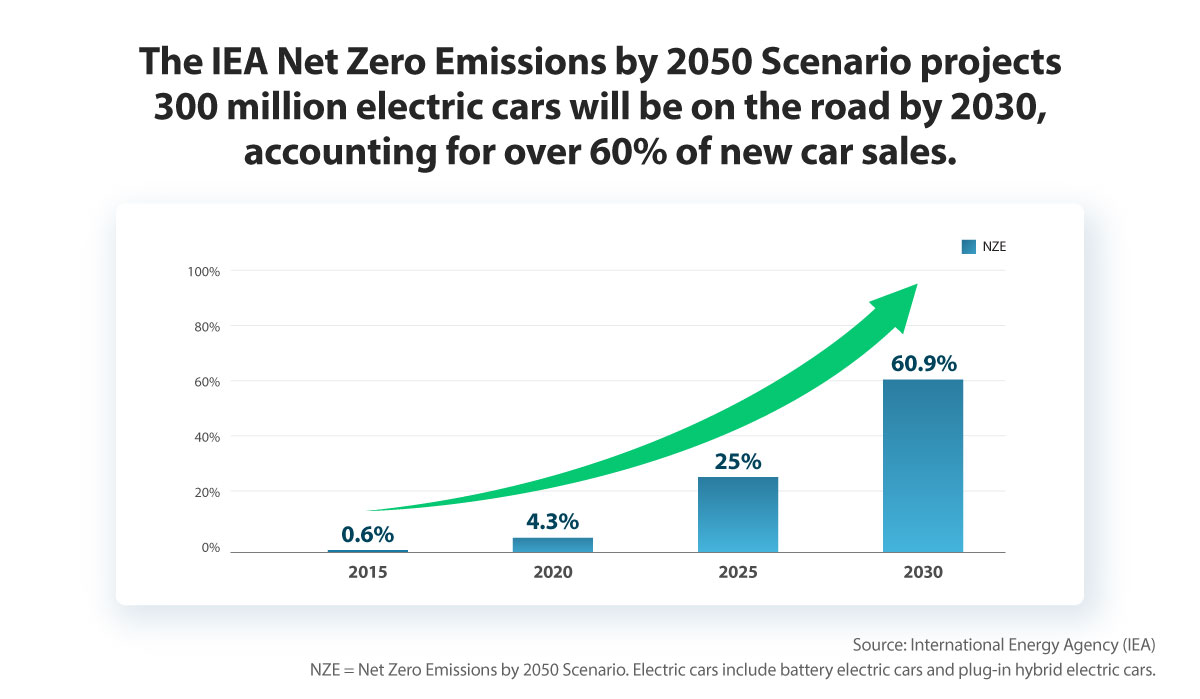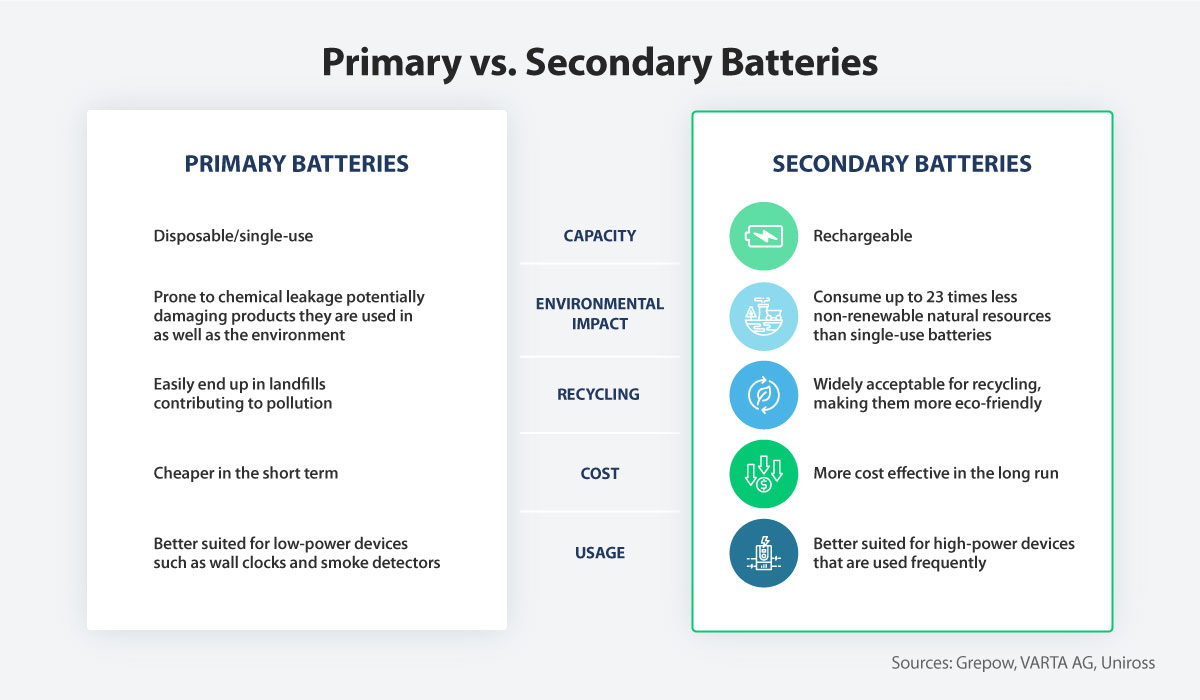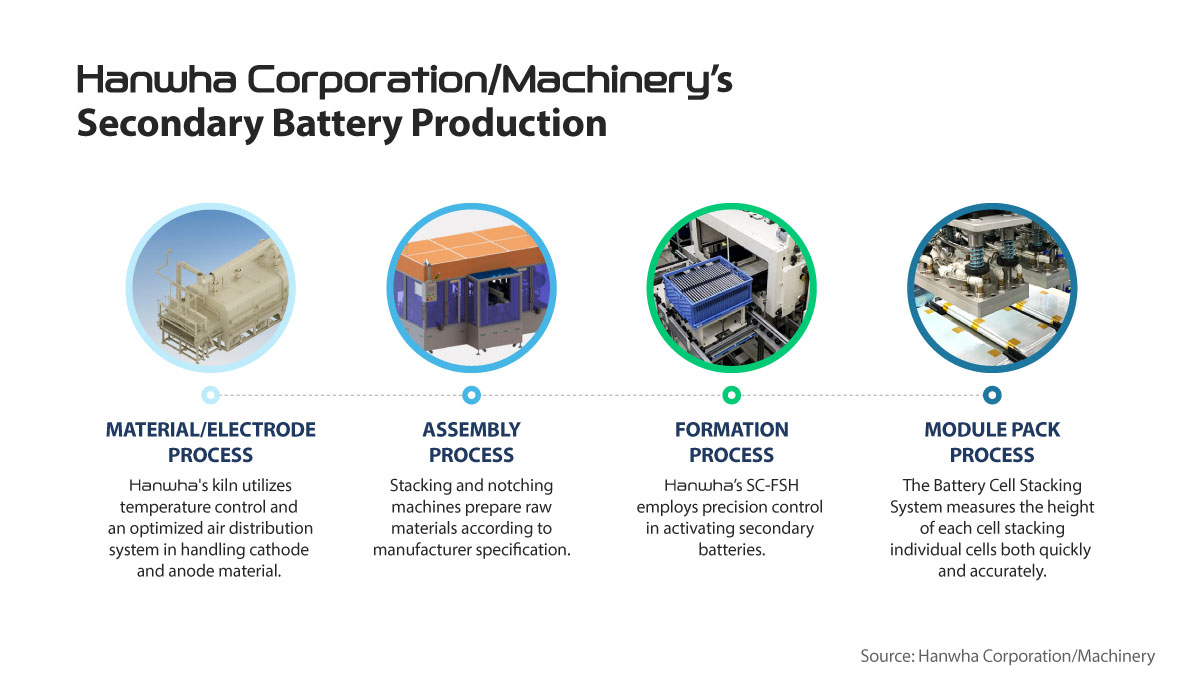Hanwha’s Secondary Battery Production Systems Are Fueling the Future of Sustainable Transport

Amid soaring gas prices and the ongoing push for lower emissions to reach net zero by 2050, urgency for green mobility solutions is on the rise. In response, there have been several significant moves, both in the private and public sectors, to incentivize the worldwide adoption of sustainable transportation. While some countries offer subsidies for electric vehicle owners, others are announcing plans to phase out gas-powered vehicles entirely. Those incentives seem to be working – more electric vehicles are on the road than ever before. The resulting EV demand surge can be felt at all levels of the supply chain, especially when it comes to manufacturing the very component that powers green mobility – the secondary battery.
Backed by years of experience in the manufacturing industry, Hanwha is making secondary batteries more accessible, putting their expertise to work and supplying secondary battery producers with their top-tier equipment.
Electric Vehicles Energize Net Zero Efforts
We’ve come a long way since electric vehicles first appeared on the U.S. market in the 19th century. When they were first invented, the electric car wasn’t much more than an electrified wagon capable of transporting up to six people at a whopping top speed of 14 mph. Today’s electric vehicles are incomparably more sophisticated, reducing greenhouse gas emissions while offering a wider range of capabilities. For example, the modern electric car battery has an average range of about 250 miles between charges. But how long does an electric car battery last? Are electric vehicles a sustainable long-term solution? In short, yes. Current predictions suggest an EV battery will last 10-20 years depending on factors such as exposure to extreme heat or cold and general vehicle care.
In addition to their impressive lifespan, electric vehicles also play a major role in combatting the greenhouse effect and reaching net zero emissions, referring to a scenario in which a balance is achieved between greenhouse gases emitted and greenhouse gases absorbed into the atmosphere.
Since consumers are no longer having to choose between eco-friendly and stylish modes of transportation, it’s easy to see why there has been a recent uptick in EV sales. In fact, Bloomberg recently estimated that 20 million EVs will be on the road by June 2022 – that’s double the estimated number from 2020. By 2040, it is predicted that half of the vehicles being driven will be electric.

While this shift to electric is a significant way to reduce greenhouse gases, it’s also causing an unprecedented level of innovation for secondary batteries. Hanwha is up for the challenge, providing sustainable solutions and technology to major secondary battery producers and helping these companies stay ahead of the trend while diminishing greenhouse gas emissions.
Charging Ahead with Secondary Batteries
Secondary batteries, or rechargeable batteries, are a key component of green mobility. Not only do they provide an optimal power source to vehicles through their high power capacity and energy density, but they also allow vehicles to run without emitting harmful greenhouse gases. Unlike disposable batteries which are depleted and then thrown away, secondary batteries can be recharged, reducing carbon footprint and chemical waste in general. In fact, rechargeable batteries have 28 times less potential impact on global warming than disposable batteries and tend to be more cost-effective in the long run. These batteries are commonly found in smartphones, tablets, wireless headphones and of course electric vehicles.
The global secondary battery market, valued at $87.82 billion in 2019, is expected to grow to $220 billion by 2027. Here’s how Hanwha is contributing to this market, offering production system solutions for each stage of the secondary battery manufacturing process.

Equipping the Future of Power
Hanwha Corporation/Machinery has a successful history of contributing to secondary battery production. Even before the EV boom we are currently experiencing, Hanwha was providing manufacturers with the equipment necessary for secondary battery fabrication. Thanks to Hanwha’s thorough and ongoing research and development, multiple industrial machinery systems used for secondary battery production have been successfully developed. These systems fall under four stages, or processes, of secondary battery manufacturing: the material/electrode process, assembly process, formation process and module pack process.
Each piece of machinery, along with its corresponding material components, plays a vital role in bringing secondary batteries to life. For example, Hanwha’s kiln, used during material/electrode processing, has the world’s largest production capacity. It utilizes high-precision temperature control and an optimized air distribution system in handling various kinds of secondary cell elements such as anode and cathode materials, both major components of the battery.
The cathode is a component comprised of several raw materials that determines a battery’s capacity and output. Consequently, the overall health and value of secondary batteries are affected by the composition of cathode materials used in its production. In short, high-quality cathode materials mean a better, more powerful battery. To ensure an excellent cathode, caustic soda, or sodium hydroxide, is employed. This substance is used to remove impurities from cathode materials making it a key component in secondary battery production and the overall advancement of green mobility. Hanwha is currently the top domestic producer of caustic soda producing 840,000 tons per year. However, Hanwha Solutions plans to increase this number upping its annual caustic soda production volume to 1.11 million tons by 2025.
Hanwha offers many excellent solutions for the next step in secondary battery production – assembly. During this step, Hanwha’s stacking and notching machines are utilized, each operating with top-notch accuracy to guarantee production efficiency. The stacking machine stacks the cathode-anode separation membrane using a zig-zag pattern while the notching machine, as its name suggests, is for notching and cutting cathode and anode material to specification.
Following assembly, the formation process, which is the process of activating the battery, is made possible by Hanwha’s SC-FSH. This piece of equipment’s key technologies is precision control and fire prevention and suppression housing a flame sensor, CCTV and a halon fire extinguisher.
Finally, the module pack process turns single cells into a powerful module. After single cells are processed, the Battery Cell Stacking System measures the height of each cell in order to stack individual cells both quickly and accurately. Hanwha boasts several other module pack processing solutions including its Battery Tab Welding System, PU PAD Attached System, Battery Module Assembly System, and AGV Solution (AGV + Robot Junction Process).

Going Further, Together
The widespread buy-in of the sustainable transport movement continues to charge forward bringing with it an ongoing need for ingenuity and collaboration. Hanwha has proudly joined hands with other global companies in making this happen by being a trusted provider of quality secondary battery production equipment and components. Through its dedication to sustainable solutions for earth, for life, Hanwha continues to prove that together, a brighter future is possible.
Get the latest news about Hanwha, right in your inbox.
Fields marked with * are mandatory.
- Non-employee
- Employee





